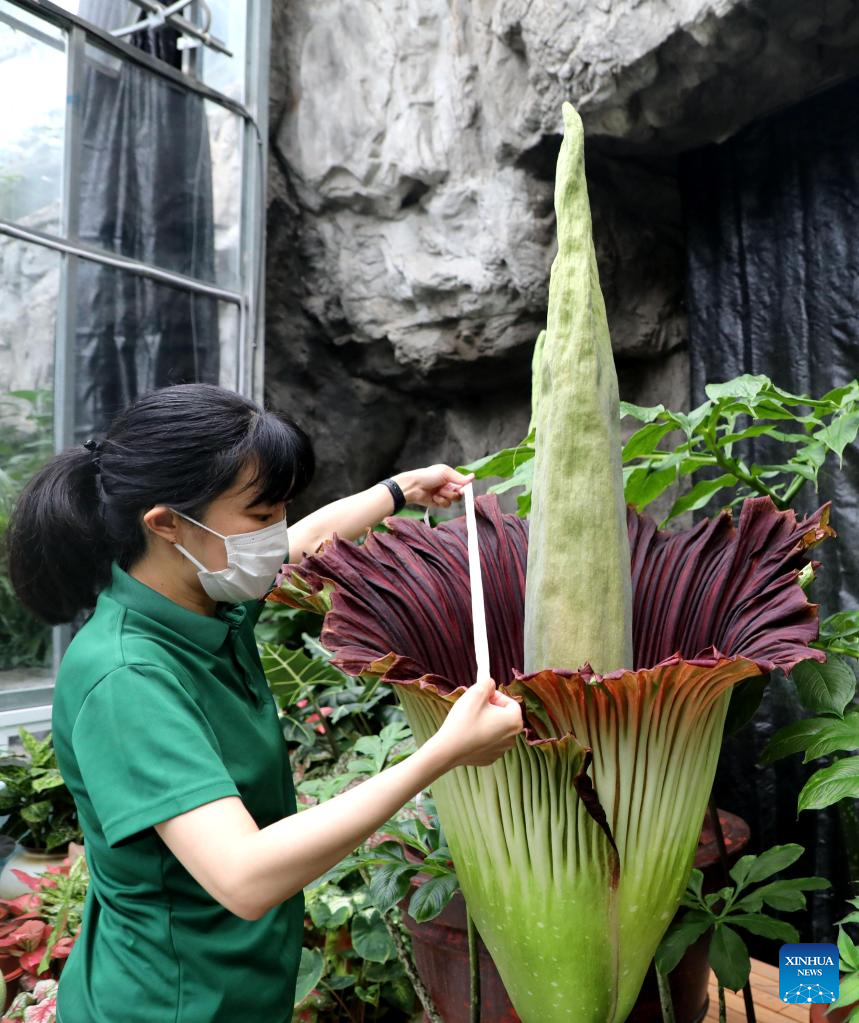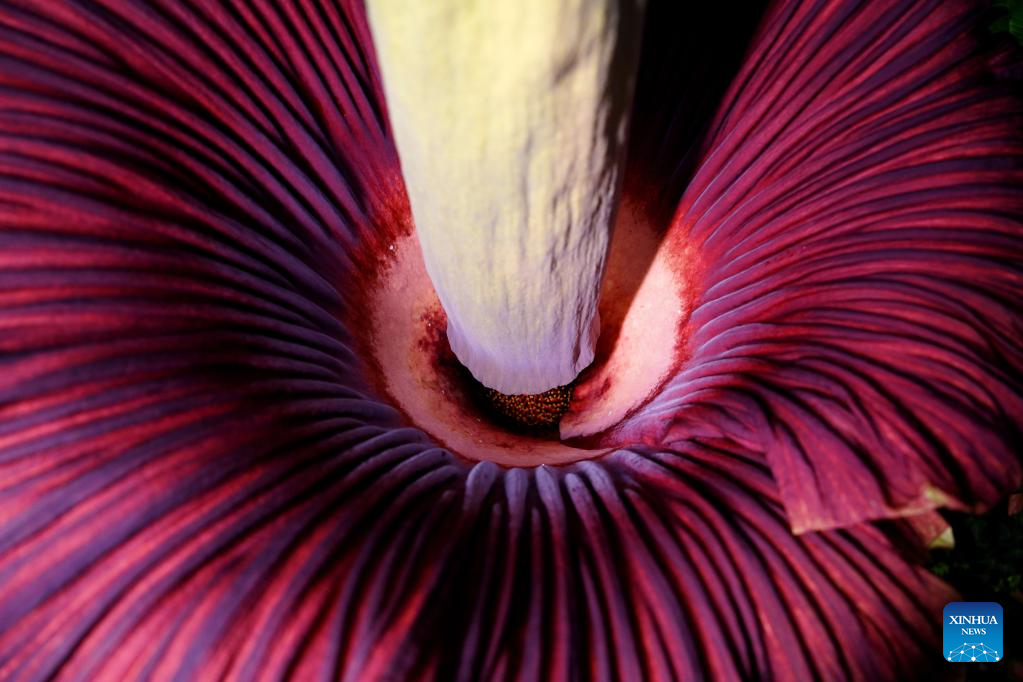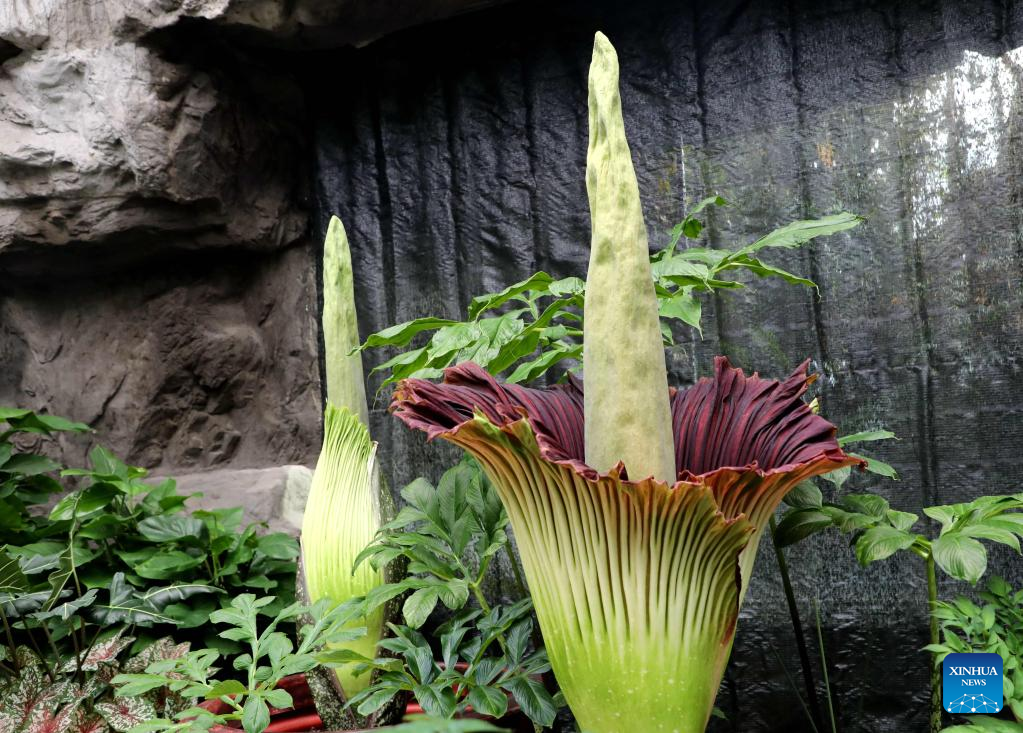
A staff member checks the temperature of a blooming corpse flower at the China National Botanical Garden in Beijing, capital of China, July 19, 2022. Two corpse flowers have bloomed at the China National Botanical Garden in Beijing, marking the first "group flowering" of the endangered species under artificial cultivation globally. (Xinhua)
BEIJING, July 21 (Xinhua) -- Two corpse flowers have bloomed at the China National Botanical Garden in Beijing, marking the first "group flowering" of the endangered species under artificial cultivation globally.
The flower first bloomed on July 6, and the second flowered on Tuesday, with the one next to it already in bud. The height of the second flower's spadix reached 1.68 meters.
It is the seventh time the flower has bloomed since its first blossom at the botanical garden in 2011, but it used to bloom as a single plant instead of "group flowering" like this time, said Niu Xia, an engineer with the China National Botanical Garden.
The flower, officially known as Titan Arum, is native to Indonesia. It is known as a corpse flower from the infamous rotting smell that helps it attract pollinators when the plant is in bloom.
It flowers in the afternoon and only blooms for about 48 hours, with the spadix reaching more than 3 meters, the highest known so far. It is listed as endangered by the International Union for Conservation of Nature (IUCN) Red List of Threatened Species.
The corpse flower is under threat from habitat destruction by timber harvesting and the creation of oil palm plantations, which highlights the necessity to protect and study the species and increase its number.
The "group flowering" of the plant at the botanical garden now marks a gratifying achievement in conserving the species in China. It reflects the high level of ex-situ conservation, scientific research, and cultivation and conservation of plants at the China National Botanical Garden.
The botanical garden organized night activities on Tuesday and Wednesday for visitors to see the blooming flowers and watch videos to learn more about the rare flower. ■

A staff member measures a blooming corpse flower at the China National Botanical Garden in Beijing, capital of China, July 19, 2022. Two corpse flowers have bloomed at the China National Botanical Garden in Beijing, marking the first "group flowering" of the endangered species under artificial cultivation globally. (Xinhua)

Photo taken on July 19, 2022 shows an inside view of a blooming corpse flower at the China National Botanical Garden in Beijing, capital of China. Two corpse flowers have bloomed at the China National Botanical Garden in Beijing, marking the first "group flowering" of the endangered species under artificial cultivation globally. (Xinhua)

Photo taken on July 19, 2022 shows a blooming corpse flower (R) and a budding corpse flower at the China National Botanical Garden in Beijing, capital of China. Two corpse flowers have bloomed at the China National Botanical Garden in Beijing, marking the first "group flowering" of the endangered species under artificial cultivation globally. (Xinhua)



